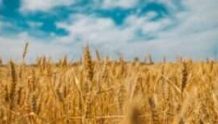Hay prices and availability will be among the most significant challenges cattle raisers will face this winter. Mary Drewnoski, beef systems specialist at the University of Nebraska-Lincoln, presented on this topic during a recent webinar through Oklahoma State University.
To properly meet cow nutrient needs, producers must understand the quality of their forage and how it impacts dry matter intake. Drewnoski sorts forage into three categories—low quality, medium quality and high quality. She said low quality forage is anything less than 52% total digestible nutrients, or TDN. Corn and soybean residue fit in the low-quality category.
“You’re going to get about 1.8% of body weight for dry cows and even that varies a bit depending on feeding method,” she said.
Medium quality hay encompasses the majority of hay available and includes forage with 52 to 59% TDN. High quality hay is mostly fed to dairy cattle and is greater than 59% TDN.
Another element to consider for forages is crude protein, although there are certain limitations for this value. Drewnoski said producers often underestimate the amount of energy and protein lactating cows need.
“A mid-gestation cow needs about 11 to 12 pounds of TDN and about 1.6 pounds of crude protein,” she said. “Comparatively, a late gestation cow needs 14 pounds of TDN and 2.2 pounds of crude protein.”
Drewnoski said for a gestating cow, crude protein works well because the microbes can utilize any ruminal-available protein to fulfill the protein needs of the cow.
“When we get into early lactation, crude protein doesn’t tell you everything you need to know,” she explained. “We can be providing plenty of ruminal-available protein like in alfalfa and still not quite be meeting the needs of that cow for actual protein. Especially on young cows, this can affect breed-up.”
In drought conditions like the past year, Drewnoski suggests producers consider adding a bypass protein through cottonseed meal or dried distiller’s grain, also known as DDGs. She said even an ionophore can help meet their true protein needs.
Corn residue is usually about 45% TDN and ranges from 3 to 6% crude protein. Drewnoski said producers that are grinding ingredients like corn residue, soybean hay and sorghum residue should be testing for nitrates, especially if they’re not going to be coupling it with higher energy feedstuffs. When comparing corn and sorghum residue, Drewnoski pointed out that milo is actually higher in energy than corn. Sorghum residue is about 52% TDN and can even be up to 55%, and ranges from 5 to 7% crude protein.
Drewnoski said corn residue does not meet a mid-gestation cow’s need. Sorghum on the other hand can meet a late-gestation cow’s requirement. However, forages can also work together to solve this dietary equation.
“We can couple corn residue and soybean hay, for instance, to meet the needs,” Drewnoski explained.




